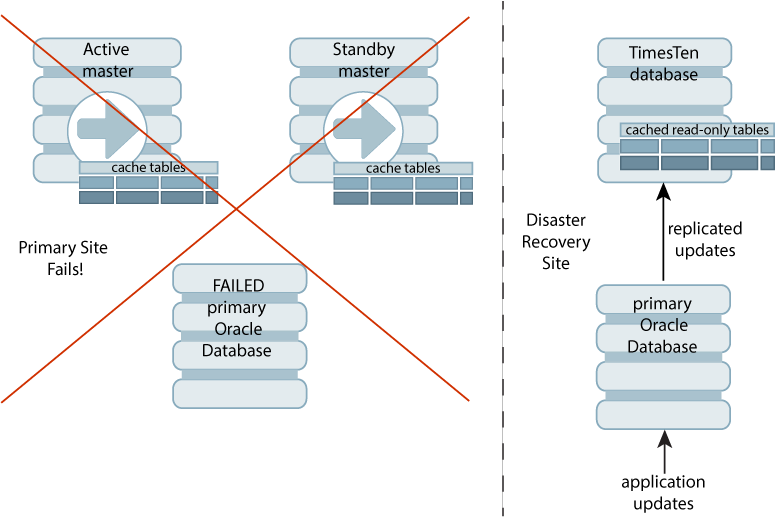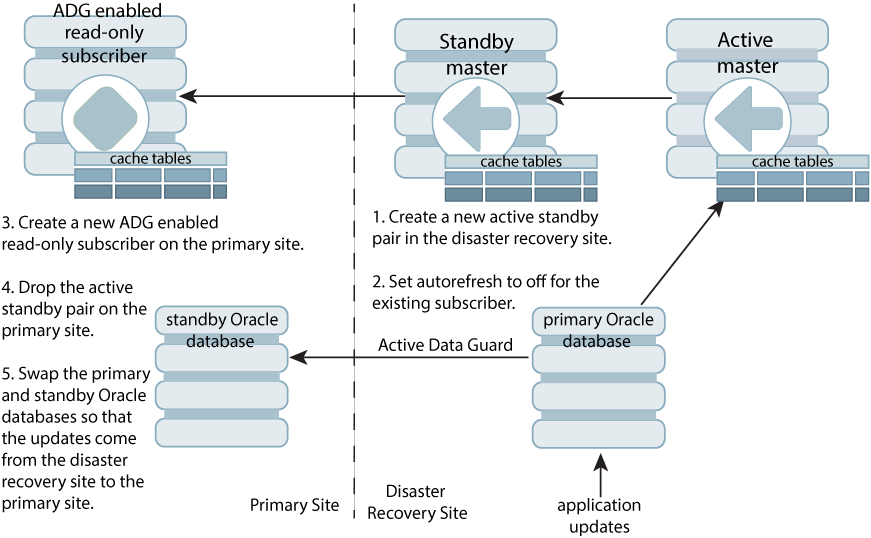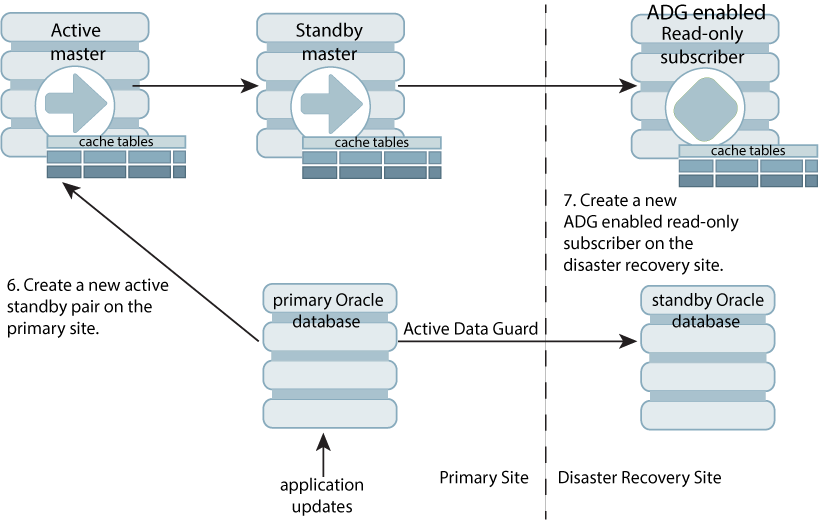Failure of the Primary Site
If the entire site where the primary Oracle database as well as the active and standby master databases are located fails, then the standby Oracle database becomes the primary Oracle database.
After which, you may want the disaster recovery site to become the primary TimesTen database. Thus, on the disaster recovery site, the standby Oracle database is now a sole Oracle database and the read-only subscriber becomes a single TimesTen database that caches data in the Oracle database.
Transform the subscriber into a single TimesTen database with cached tables by:
-
Drop the active standby pair on the TimesTen database on the disaster recovery site.
-
Alter the existing read-only cache groups on the disaster recovery site to set the autorefresh state to on.
After which, the cache tables on the TimesTen database in the disaster recovery site receive updates from the new primary Oracle database.
Figure 10-3 Recovery After Failure of Primary Site

Description of "Figure 10-3 Recovery After Failure of Primary Site"
The following is the process to recover a failed primary site and rebuild your environment to the original state:
-
Create a new active standby pair on the disaster recovery site.
-
Alter the existing read-only cache groups on the disaster recovery site to set the autorefresh state to off to stop any future updates from the primary Oracle database.
-
Create the ADG enabled read-only subscriber on the recovered primary site.
-
Drop the active standby pair on the ADG enabled read-only subscriber on the primary site, if it still exists after recovering the primary site.
-
Switch over the Oracle databases in the Active Data Guard. Currently, the applications are updating the primary Oracle database on the disaster recovery site. However, once you recover the Oracle database on the primary site, we want it to take over again as the primary and to make the Oracle database on the disaster recovery site as the secondary.
The TimesTen database starts to receive updates from the Oracle database on the primary site.
-
Create a new active standby pair on the primary site.
-
Create a new ADG enabled read-only subscriber on the disaster recovery site.

